About the Artist
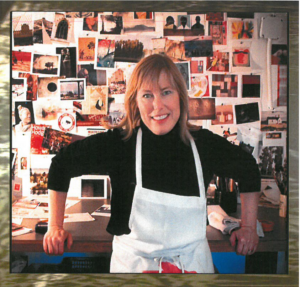
Karen Woods has lived and painted in Boise since 1994. Known primarily for streetscapes as seen through the windshield of her truck, she nevertheless embraced the challenge of painting the diverse subject matter of History Department professors. She got her BFA at the California College of Arts in 1987, and studied in Florence, Itlay. Her work is exhibited in Boise, New York, Los Angeles, and Boston. Visit her website at www.karenwoods.com.
A Visual Journey Through the Eyes of Historians
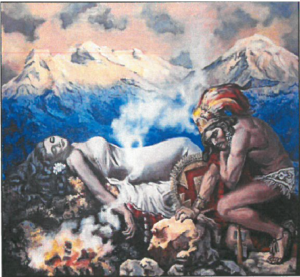
Los Volcanes
Dr. Emily Wakild
This famous painting by Mexican painter Jesus Helguera depicts volcanoes that formed the National Park of the Volcanoes (Popocatepetl and Iztaccihuatl). The figures are part of a folk tale where two star-crossed lovers were immortalized in the peaks behind them.
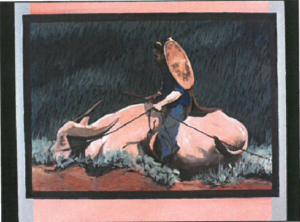
Farmer in Rice Field
Dr. Shelton Woods
History is not the workings of a few powerful leaders. Asian history is best understood through the eyes of the everyday farmer whose life came from the stalk of rice he or she planted in the soil.
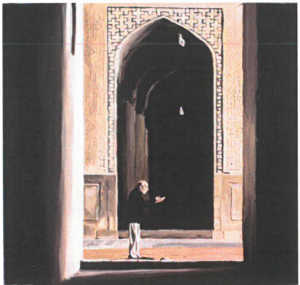
Man Praying in Iran, 1997
Dr. Michael Zirinsky
The Masjed-e Jomeh (Cathedral Moaque) dates from the 11th century C.E. It evokes many themes in the history of the Islamic Middle East including the modern period, the centrality of Islam, the combination of modernity and tradition, and the beauty and humanity of civilization.
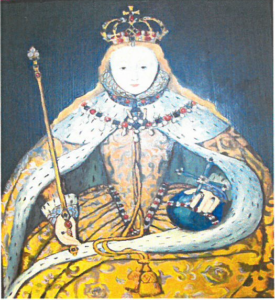
Queen Elizabeth
Dr. Lisa McClain
Portrait of Elizabeth I (r. 1558-1603) in her coronation robes. Historians recognize Elizabeth I’s reign as a Golden Age for England. These are the years of Shakespeare and Marlowe, the defeat of the Spanish Armada, and the strengthening of the English Reformation.
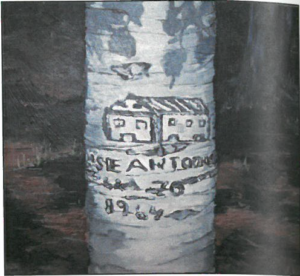
Basque Arborglyph, Idaho
Dr. John Bieter
Basque immigrant sheepherders didn’t leave diaries or documentaries but rather tree carvings that they left on aspens. It reminds us of the work of millions of immigrants and the challenge to document their lives.
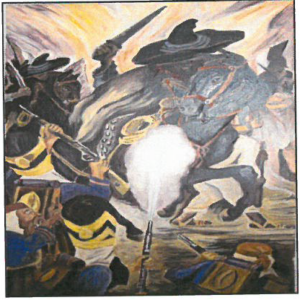
Carnival at Huejotzingo, 1936
Dr. Errol Jones
Detail of a Diego Rivera mural in the Hotel Reforma showing the bandit-hero Augustin Lorenzo who fought French invaders in the 1860’s.
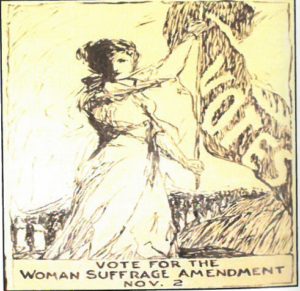
Suffragette Poster – 1920
Dr. Sandy Schackel
Political rights were gained in 1920 after a seventy-two year struggle when the US Congress passed the 19th amendment guaranteeing the right to vote for all the eligible women then and in the future.
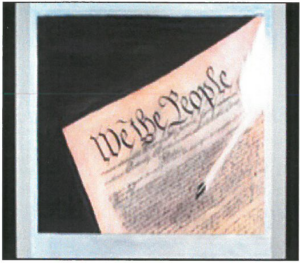
Declaration of Independence
Dr. Rodney Valentine
Because democracy is still humanity’s best hope.
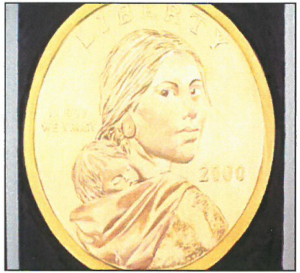
Sacagewa Dollar Coin
Dr. Pat Ourada
Sacagewa, a role model for Indian girls today, was modeled on this US dollar coin by a young Shoshone-Bannock/Cree woman from the Fort Hall Indian Reservation in Idaho.
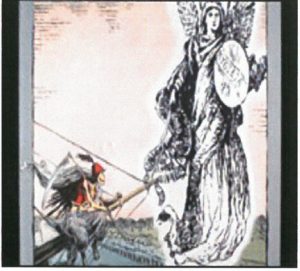
Cholera & Hygeia, 1880’s
Dr. Nick Casner
Adapted from cartoons, the panel depicts a progressive response to disease in late 19th century America.
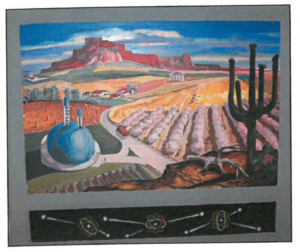
Transforming the Desert
Dr. Lisa Brady
Science proposed to transform deserts into productive landscapes and humans believed they could conquer nature. Environmental History questions such assumptions by examining the constantly changing relationships between humans and the non-human environment.
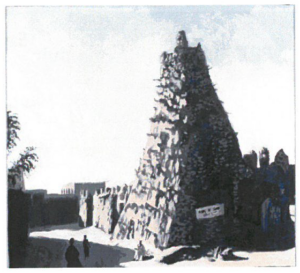
Mosque of Timbuktu
Dr. Peter Buhler
This mosque in a unique African style not only symbolized the spread of Islam into Saharan Africa, but was also symbolic of the melting pot the area was, and its engagement in global trade via routes that existed over 1500 years. Sadly, the mosque was destroyed in 2012.
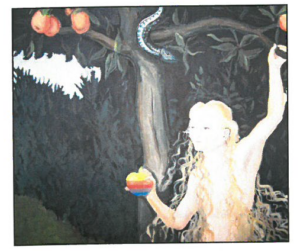
Eve and the Apple
Guen Johnson (History Assistant 1999-2013)
Apples from antiquity and from the modern age have influenced the path of humankind.
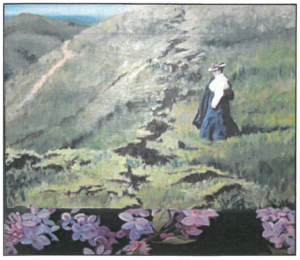
San Andreas Fault, 1906
Dr. Leslie Madsen-Brooks
This picture shows 19th & early 20th century botanist Alice Eastwood standing along the San Andreas Faults scarp outside San Francisco. Eastwood was, to put it mildly, a colorful character. She usually put a riot of fresh flowers on her hat.

Flower Power
Dr. Jill Gill
With 500,000 American troops in Vietnam stuck in a stalemated war, many Americans, especially college students, began questioning the purpose or justification of the war. The famous 1967 photograph “Flower Power” by Bernard Norman Boston was the subject of this painting that shows the clash of values and the “question authority” protest spirit that made the sixties era one of the most dynamic and divisive in America’s social history.
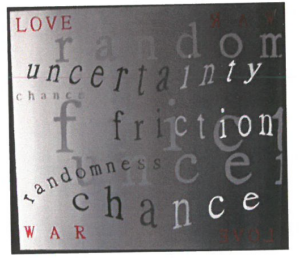
Understandings
Dr. David Walker
This painting reflects how I approach the understanding of human nature and events. We live in a world of uncertainty and chance — in the gray space between compassion and violence.
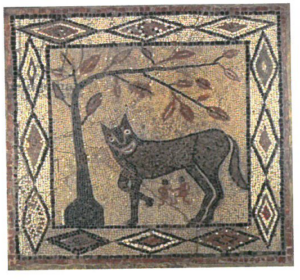
Romulus & Remus Mosaic
Dr. Katherine Huntley
From a Roman villa at Aldborough, Yorkshire UK, this mosaic dates to about AD3000. The two babies with a she-wolf is from Rome’s foundation myth. A Vestal Virgin named Rhea Silvia was raped by the god Mars and gave birth to twins. A jealous uncle had the babies exposed, and a she-wolf found them and raised them. The twins later founded Rome.
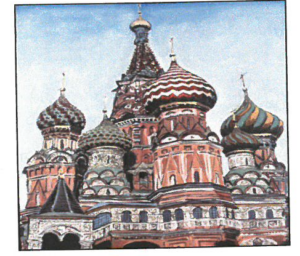
Pakrovsky Cathedral
Professor Phoebe Lundy
On the south side of Red Square, this cathedral was ordered to be built by Ivan IV to commemorate Russia’s annexation of the Khanates of Kazan and Astrakhan. It is known as St. Basil’s in the West.
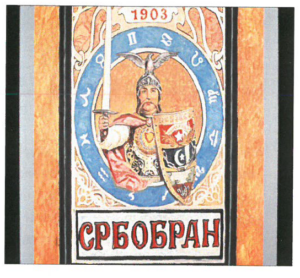
Serbian Calendar
Dr. Nick Miller
The “Serbian Calendar” was a yearly almanac which detailed Serbian Orthodox religious holidays, saints’ days, etc., and included poetry, short stories and more by Serbs in Croatia. It helped sustain Serbian culture in a foreign land.
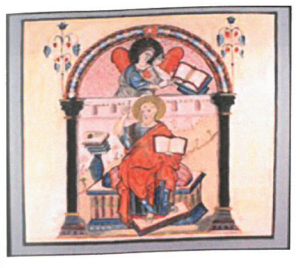
St. Matthew, 9th Century
Dr. Charles Odahl
This painting depicts St. Matthew sitting between classical columns and beneath a Roman arch in the pose of a medieval monk as he is about to begin writing his gospel. Above him is the Holy Spirit with his own codex, preparing to inspire the evangelist below.
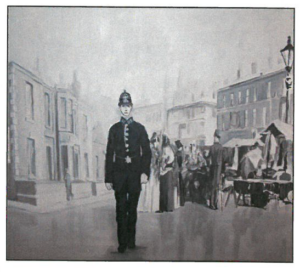
English Constable, 1900’s
Dr. Joanne Klein
“We have most of us…seen the English Policeman crowned and flattered…We may live to see the English Policeman murdered, [mobbed, stoned, and kicked]…But we shall not see the Police treated as an ordinary man, neither better nor worse than others.” -G.K. Chesterton, 1904
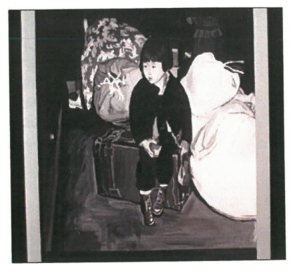
The Face of the Enemy
Dr. Robert Sims
This highly recognized photograph depicts the unjust and unnecessary action that uprooted over 112,000 Americans of Japanese ancestry during World War II that sent them to internment camps. Depicted is a young Yuki Okinawa (Llewellyn) who was removed from her L.A. home and sent to the Manzanar Camp in California.
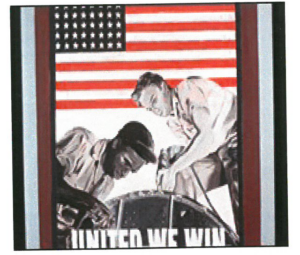
United We Win
Dr. Todd Shallat
The U.S. government hoped to counter the demoralizing efforts of racial segregation in war posters that featured the American contribution to victory.
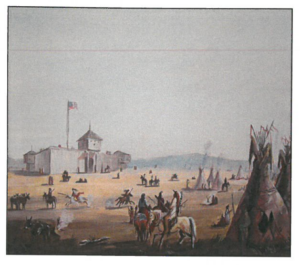
Fort Union
Dr. Barton Barbour
This painting depicts the longest-lived Upper Missouri River fur trading post.
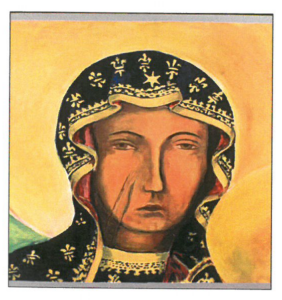
The Black Madonna of Jasna Gora
Dr. Lynn Lubamersky
The legend of Matka Boska Czestochowska (the Black Madonna) as shown is a detail from a wooden panel depicting the Virgin Mary with Christ. Damaged in the 1430’s by the Hussities, the picture was repainted but the scars on the face were left.